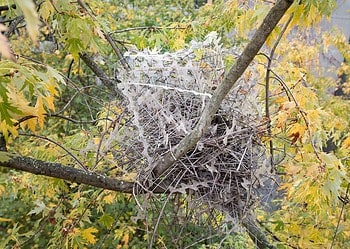
Male peacocks are famous for their flamboyant plumage, which doesn’t serve any purpose other than to attract a mate. It’s a prime example of sexual selection listed in every textbook on evolution. Funny thing is, for all the effort they put into their attire, peacocks are really lousy singers — and a new study found that they’re not alone. According to researchers at the University of Oxford birds who sing well have less striking plumage, and vice-versa.
You can’t have the best of both worlds
The researchers led by Christopher Cooney, an evolutionary biologist at Oxford’s Department of Zoology, compared the feather colors and songs of 518 species of birds.
The sex-differences in plumage coloration is a standard indicator of sexual selection, correlating with other indices such as testes size, the degree of polygyny (the practice of mating with multiple individuals), and extra-pair paternity (promiscuous mating behaviour in monogamous species). Another important indicator of sexual selection, particularly in birds, is represented by acoustic ornaments — the birdsong.
[panel style=”panel-info” title=”What is sexual selection?” footer=””]Charles Darwin proposed that all living species were derived from common ancestors, proposing natural selection as the driving mechanism. Natural selection simply states that organisms better adapted to their environment would benefit from higher rates of survival than those less well equipped to do so, and would thus be more likely to pass on copies of their genes.
Darwin noted, however, that some elaborate traits had no apparent adaptive purpose and clearly did not aid survival (and in some cases jeopardized it by attracting predators) but rather served a sexual purpose. These traits could evolve if they are sexually selected, hence the name sexual selection.
Sexual selection operates through two mechanisms: intrasexual selection, which refers to competition between members of the same sex (usually males) for access to mates, and intersexual selection, where members of one sex (usually females) choose members of the opposite sex. [/panel]
The analysis performed by the Oxford researchers had three parts. First, they analyzed published song recordings to estimate the extent of song divergence within species pairs. Second, they assessed the relationship — if there was one to begin with — between sexual dichromatism (sex differences in color of plumage among birds of the same species) and the degree of song divergence across pairs. Lastly, the researchers used statistical models to assess the relative association between dichromatism and song divergence in relation to other factors.
These findings suggest that birds where males showed off fancy plumage tended to have more monotonous songs. Conversely, bird species in which the male and female more closely resembled each other had livelier, longer songs.
The study published in the journal Royal Society Proceedings B seems to indicate that there’s an inherent trait between the two sexual selection traits. You can’t have both perhaps because each trait is costly. Also, perhaps it is pointless to expend energy when one of the traits is working just fine. Who needs to sing well when you look as fabulous as a male peacock?






